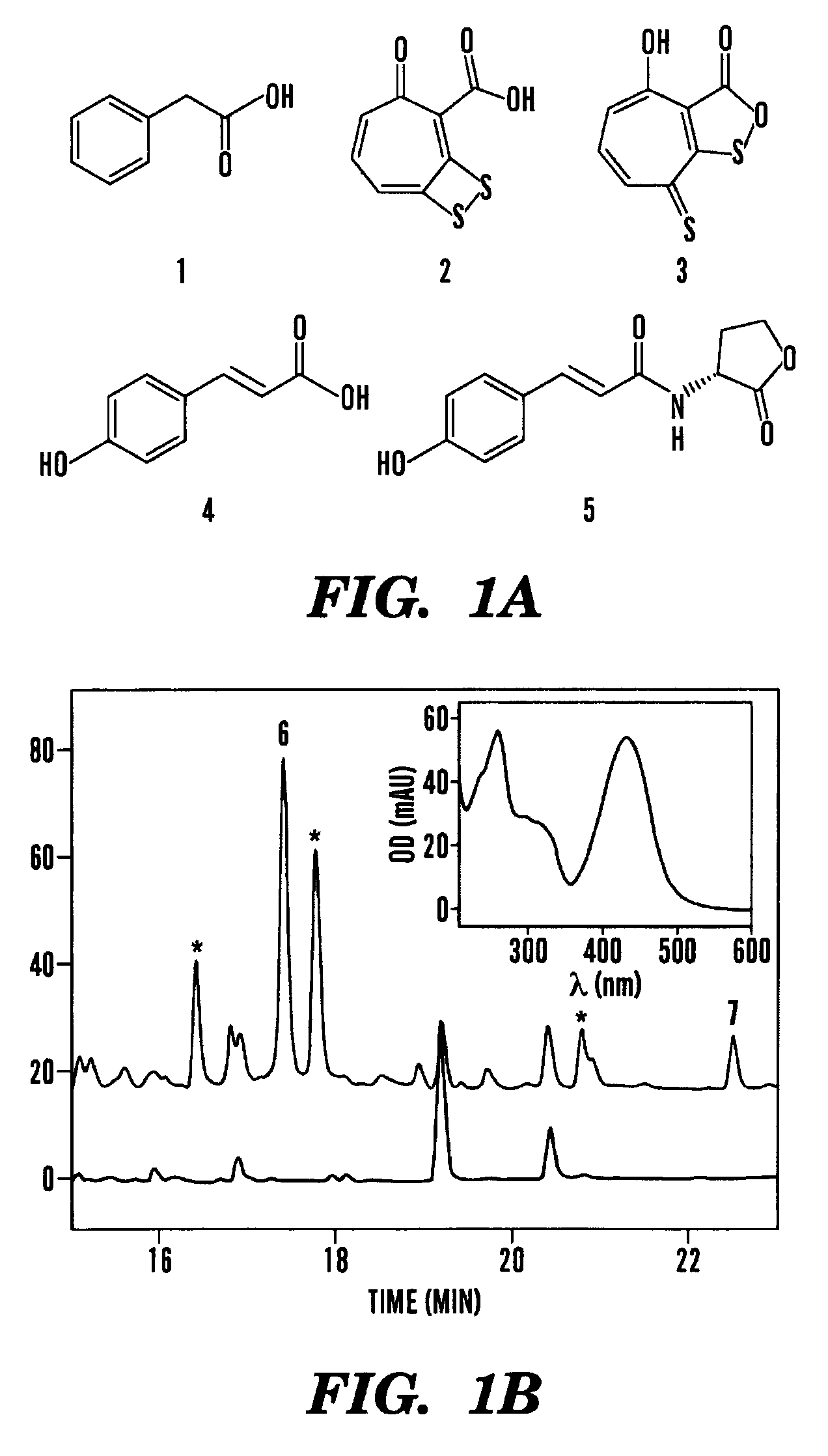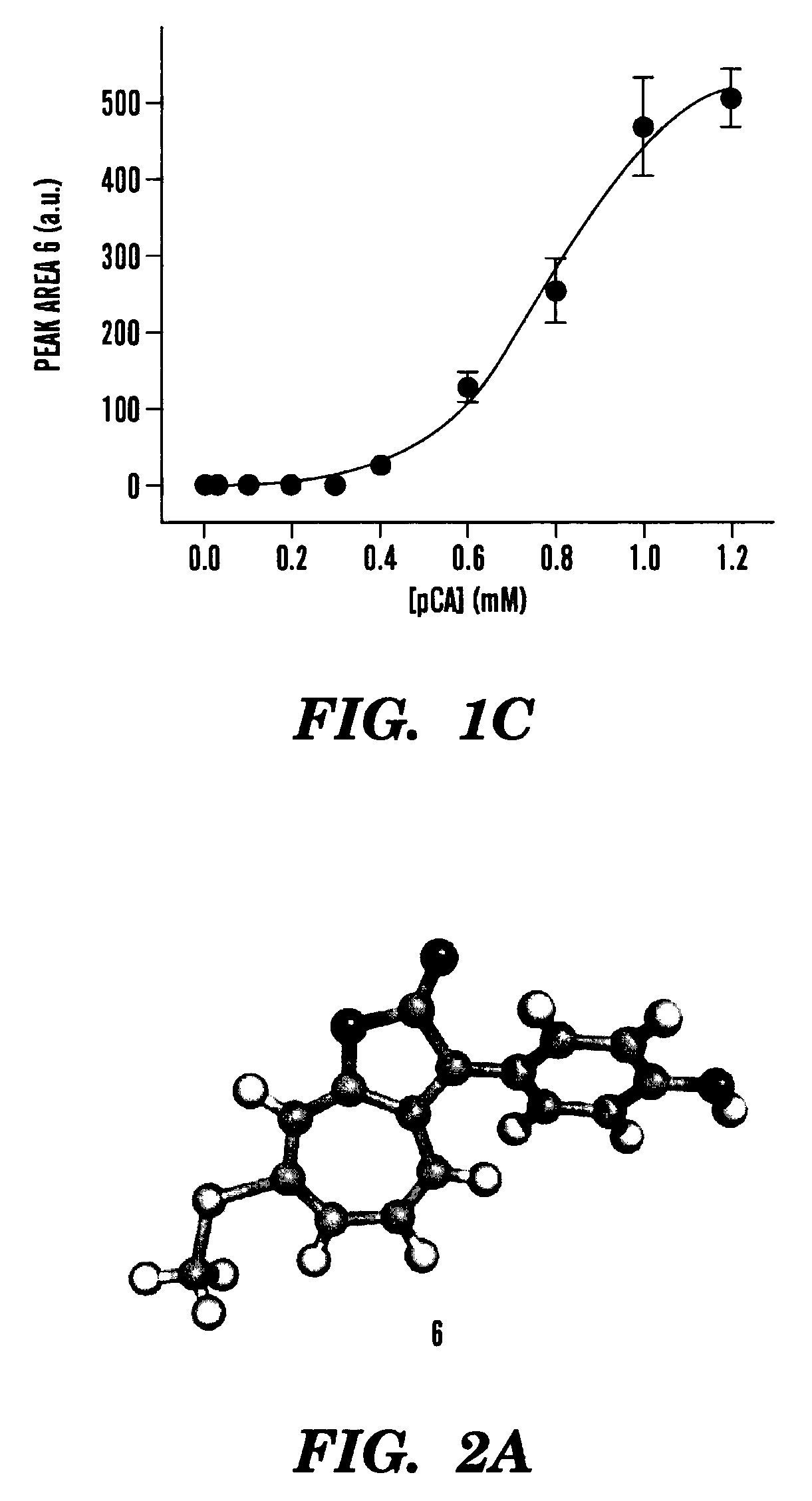Roseobacticides and uses thereof
a technology of bacticides and fungi, applied in the field of fungicides, can solve the problems of uncontrollable algal bloom, unfavorable human use of water, and increasing to the point of threatening people's access to food (e.g., fish and shellfish), and achieve the effect of preventing algae growth
- Summary
- Abstract
- Description
- Claims
- Application Information
AI Technical Summary
Benefits of technology
Problems solved by technology
Method used
Image
Examples
example 1
Naturally Occurring Roseobacticide A and B
[0237]Eukaryotes evolved on a planet teeming with bacteria, and close associations between the two characterize life as we know it. In some interactions the bacterial symbiont switches from a harmless or even a helpful member of its eukaryotic host's microbial community into a deadly pathogen (Rosenberg, E., et al., 2007, Nat. Rev. Microbiol. 5, 355-362). As bacteria largely sense their environment through molecules, a molecular signal from the eukaryotic host typically initiates the switch, and bacteria respond by producing molecular virulence factors Lutgendorff, F., at el., Curr. Mol. Med. 8, 282-298 (2008). Outside of medical microbiology, relatively few of these initiators and responses have been studied in molecular detail, and most of the molecular players remain to be discovered. Their discovery provides both valuable insights for microbial chemical ecology and sources of potentially useful small molecules (Clardy, J., 2005, Genome B...
example 2
Determination of the Inhibition of Algae Growth
[0263]The cells of an algae species can be cultivated for several generations in any defined medium known in the art that will support growth of the algae. The algicide, Roseobacticide A-EE or a compound comprising the formula I described herein is then added in various concentrations. Chlorohexidine (═CHD) can be tested in comparison to Roseobacticide A-EE or a compound comprising the formula I described herein used a positive control. A control free of algicide is also included in the experiment. The Roseobacticide A-EE or a compound comprising the formula I described herein can be used in all of the examples herein (Examples 2-5) as a 0.5-1 mg / mL solution or ˜0.05-0.1% weight / vol.
[0264]The test batch can be produced by mixing appropriate amounts of nutrient solution concentrate, water, stock solution of the test algicide and inoculation (seed) material of an exponentially growing alga culture. The alga genera used in the test can be ...
example 3
Determination of the Algicidal Activity in the Suspension Test
[0267]The cells of the alga species are cultivated several days on inclined alga tubes in any defined medium known in the art that will support growth of the algae and washed off for the test with the defined medium used for culture.
[0268]The test algicide: Roseobacticide A-EE or a compound comprising the formula I, is produced by mixing appropriate amounts of nutrient solution, water stock solution of the test substance and inoculation material of the alga culture.
[0269]The test batches are then incubated 14 days at room temperature under exposure to light (24 hours / day (=h / d) in each instance) and evaluated visually daily in comparison to the control cultures.
[0270]The spectrum of activity and spectrum of intensity of the alga culture in comparison to the control cultures indicate the strength of the algicidal activity of the test algicide. Typical observations include lysis of algal cells, decomposition of the entire...
PUM
| Property | Measurement | Unit |
|---|---|---|
| size | aaaaa | aaaaa |
| concentration | aaaaa | aaaaa |
| concentration | aaaaa | aaaaa |
Abstract
Description
Claims
Application Information
 Login to View More
Login to View More - R&D
- Intellectual Property
- Life Sciences
- Materials
- Tech Scout
- Unparalleled Data Quality
- Higher Quality Content
- 60% Fewer Hallucinations
Browse by: Latest US Patents, China's latest patents, Technical Efficacy Thesaurus, Application Domain, Technology Topic, Popular Technical Reports.
© 2025 PatSnap. All rights reserved.Legal|Privacy policy|Modern Slavery Act Transparency Statement|Sitemap|About US| Contact US: help@patsnap.com



